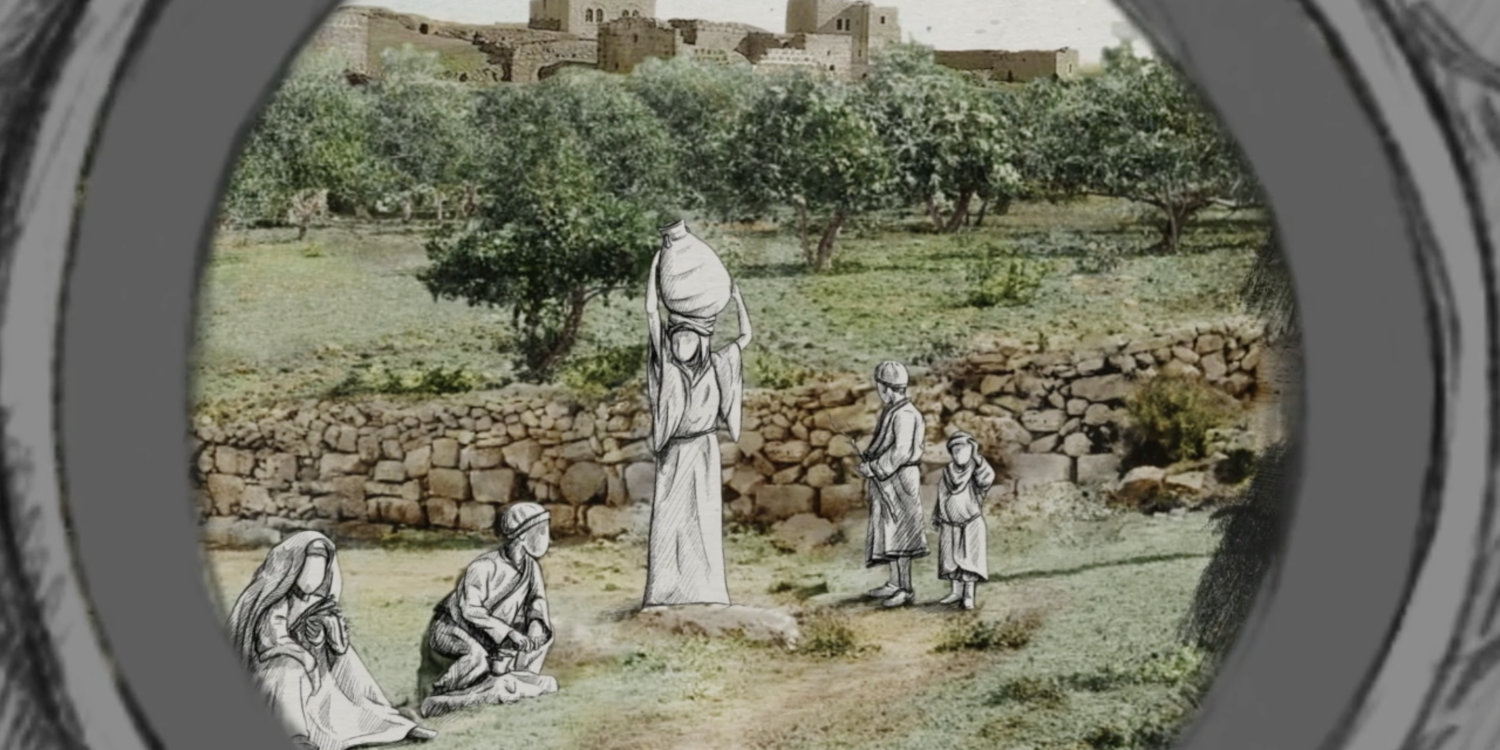Palestine refugee camps have been cited as being exceptional when compared to other sites of refuge, especially in recent scholarly works. This is in many ways due to their resilience and resistance against spatial integration over 75 years of forced protracted displacement across the Near East, as well as in the West Bank and Gaza. The exceptional nature of the Palestine refugee camp can be attributed to many of its inherent features, and can be described in various ways. In this short text and accompanying film, I focus on one exceptional quality of the Palestine refugee camp: the foundational state of dualism the camp spaces arose from and continued to grow in relation to. This lived and endured state of dualism – which both the Palestine refugee camp and the Palestine refugee experience stem from – finds its origins in the moment the Zionist colonial settler state, Israel, was established in 1948 with the support of Britain, which had a mandate over Palestine at the time. That so-called “original moment of creation” welcomed the Zionist Jewish population as worthy of a homeland in inhabited Palestine, while at the same time, desecrated the indigenous population and landscape. In the logic of the biblical colonial trope, it was the moment God chose the Jewish people from Europe and abandoned Palestinians. This is the genesis of the exceptional state of ‘dualism’ – that of continued creation through destruction – which begins to give form to the story of the Palestine refugee camp.
This state of dualism, which a Palestinian refugee from Burj el Barajneh camp in Beirut describes in the film, tells of a dialectical relationship between a camp and a space, which prompted me to use the hyphenated term camp-space. The hyphenation between camp (the defined legality of a specific refuge, including standards, definitions and regulations) and space (the material manifestation of that refuge beyond its mere legality) is meant to indicate the relational form of the Palestine refugee camp. Camp-space is more than camp, and more than space. In fact, it is everything that emerges between the two. Camp-space establishes a relationship between them which can exist in either agreement or disagreement. It defines and redefines itself in relation to modes of inhabitation that negotiate two states of refuge: camp and space.
Camp-space retains incorrigible elements, namely displacement and refuge, which have been part of its making from the onset and occasion its continued existence. The relational formations inside the “-” are unique and specific to that “camp” and that “space.” This relational form transcends a camp and a space when taken each on their own, yet it emanates from both and allows for a potential space beyond the rigid demarcations of each.
As forced displacement protracts inside the Palestine refugee camp, camp-space produces opposing realities for the lives of refugees, such as; temporary-permanent, formal-informal, imposed-subjective, and camp-city. Within these binary variables that exist in the Palestine refugee camp, the “-” becomes the physical milieu where the space and the camp ensure each other’s survival, forever linked to the original moment. If one (whether camp or space) relinquishes the other, the original moment – the ultimate reason for their existence – is abandoned, and death befalls the camp-space.
Editor’s note: for further reading into the space-making of Palestine refugee camps, we invite you to read Maqusi’s research on the topic.
The animated film employs the Sandouk El Ajayeb (box of wonders) to express the notion of duality. Sandouk El Ajayeb is an old form of storytelling that was popular in the early days of the Palestine refugee camps. The sandouk (box) which is featured at the start of the film is a movable wooden box with three or four circular holes that look inside the box, at an image roll wrapped around a spool. As a theatrical storyteller narrates the tale, they slowly move the image roll to match the moments narrated. Those interested take a seat and slip their heads into the circular holes, three or four sitting next to each other. The experience of Sandouk El Ajayeb plays on two modes of dualism; First, the simultaneous experience of real life and imaginary tale. Second, the experience of asynchronous time, as there exists a delay between image and voice by the time each frame reaches the third or fourth viewer.
This film was funded by UCL RELIEF Centre.
